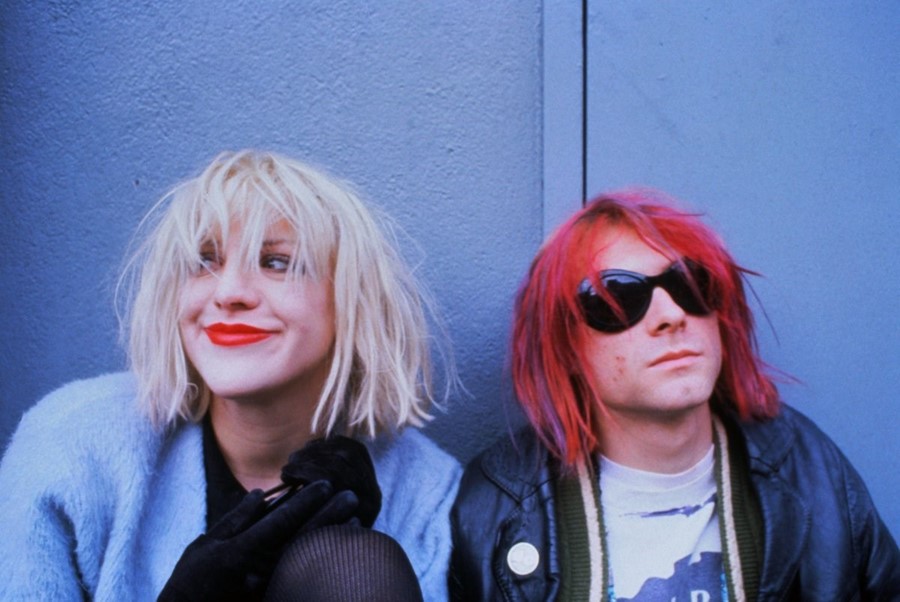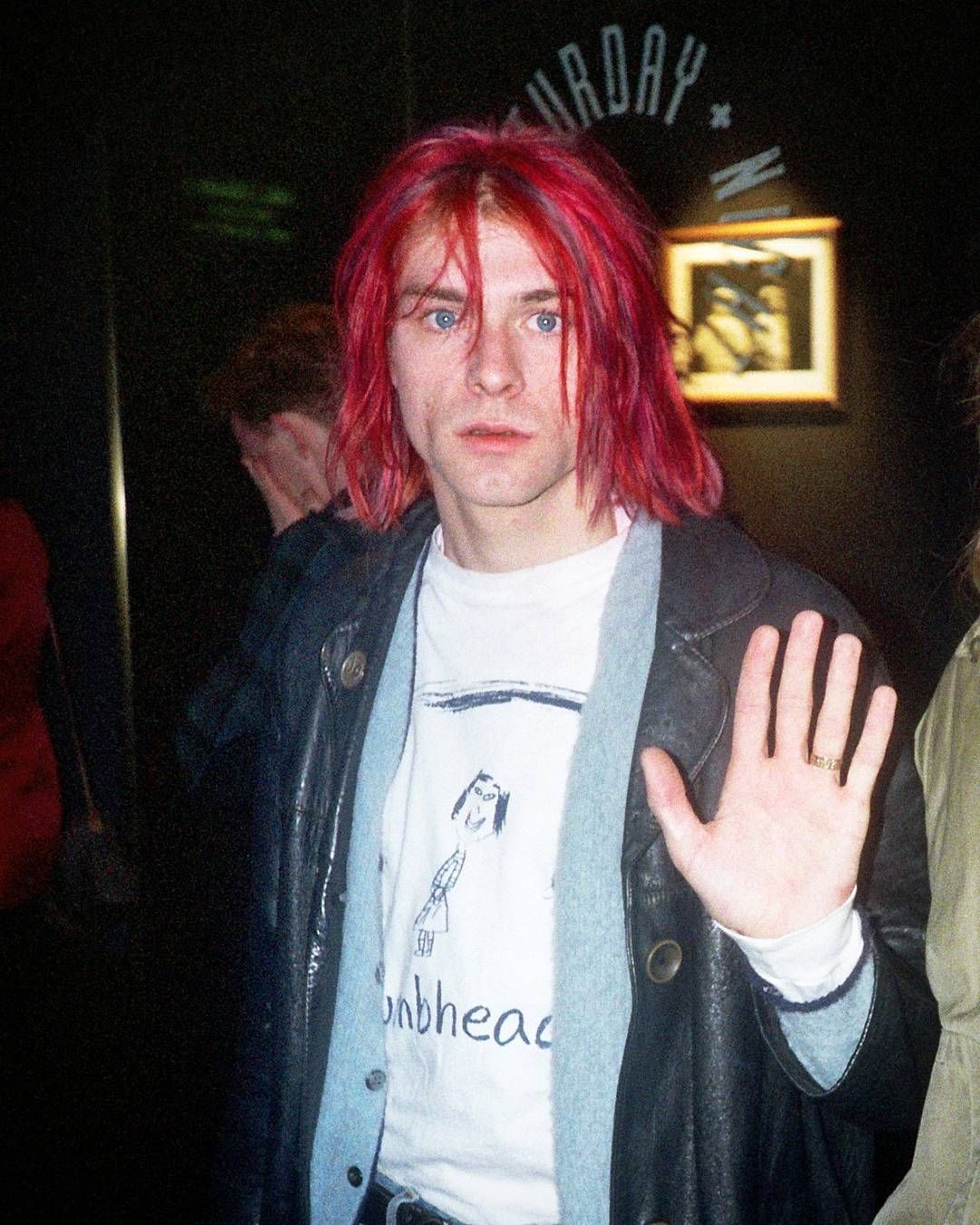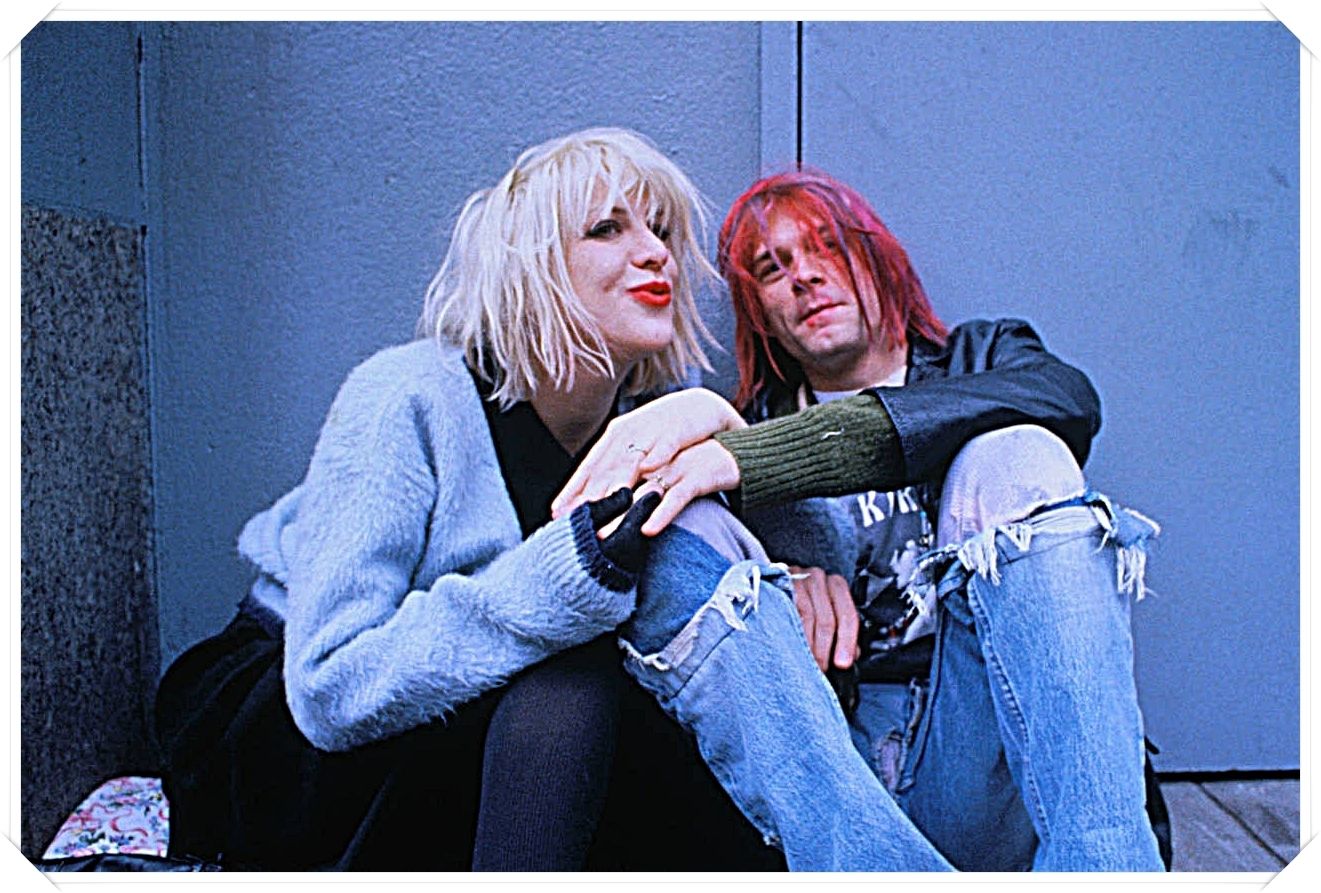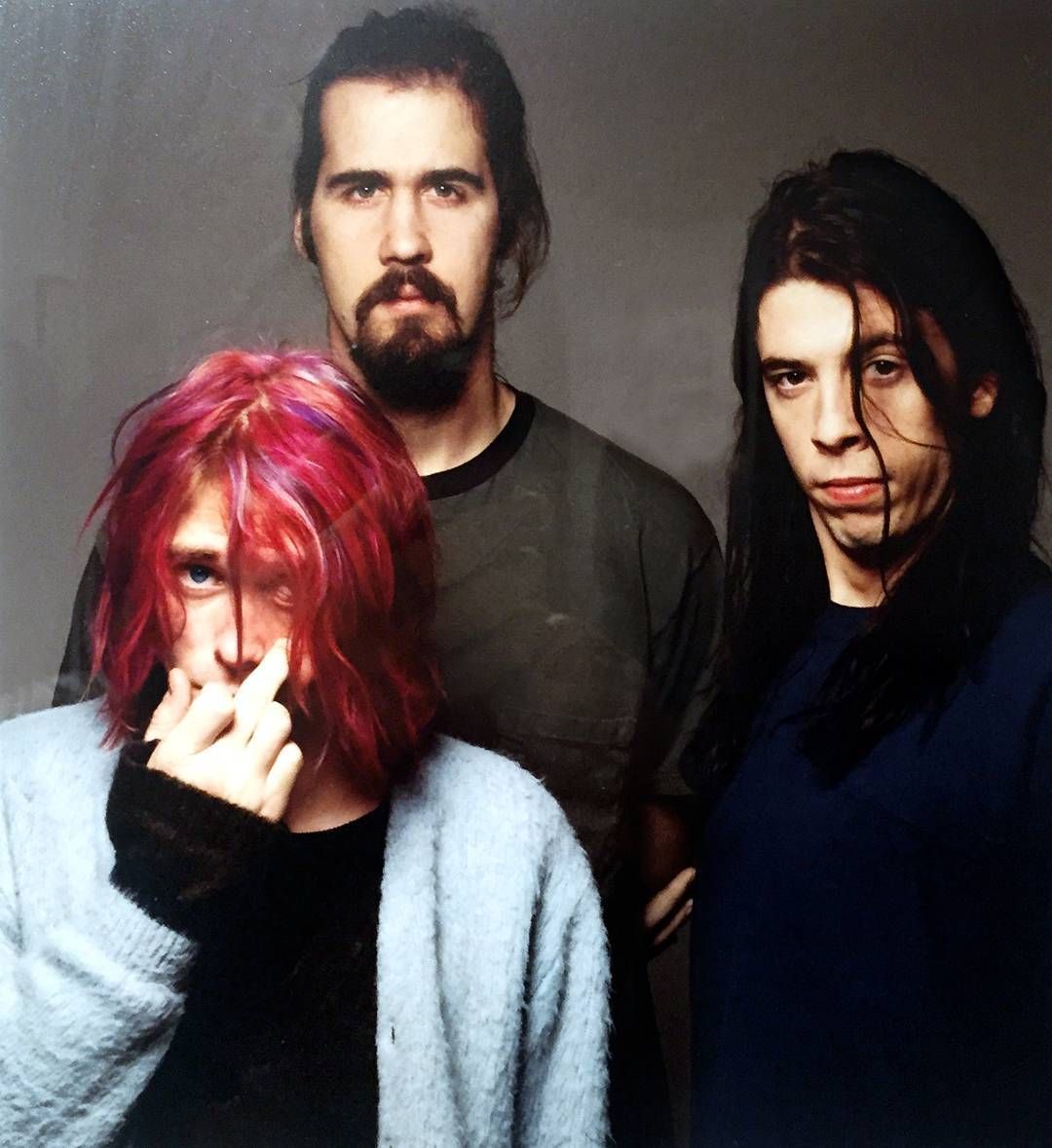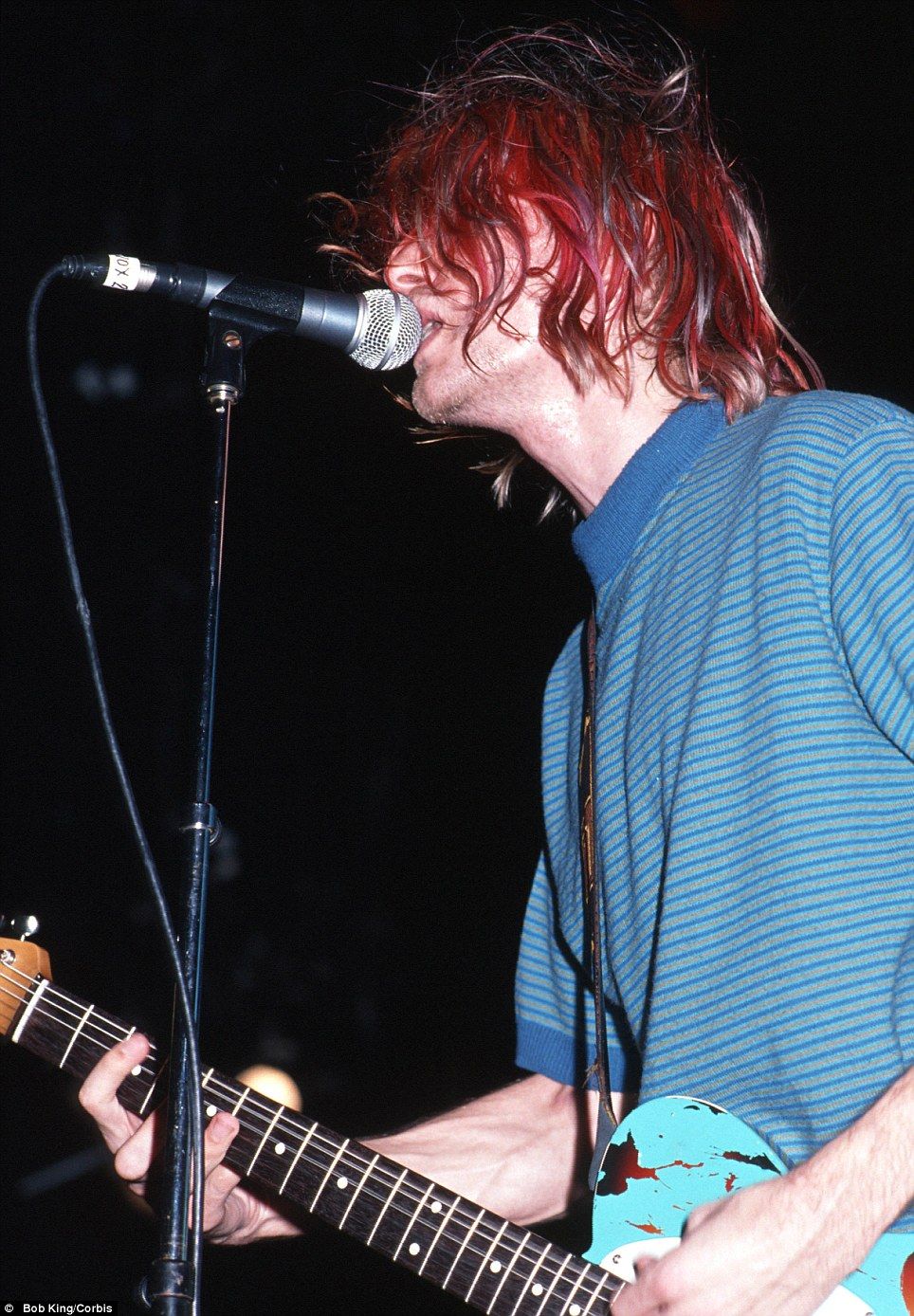Kurt Cobain was never one for conformity. His uncombed blonde hair, thrift-store sweaters, and worn jeans became the visual anthem of early ’90s rebellion. But for a brief, unforgettable moment, that familiar blonde turned a shocking shade of red—sometimes magenta, sometimes pink, depending on the light. It wasn’t a stylist’s idea or a record-label stunt. It was pure Kurt: impulsive, messy, and quietly defiant.
That red hair, seen mostly around 1990–1991, captured a raw turning point in his life. Nirvana was still an underground band, grunge hadn’t yet exploded, and Cobain was experimenting with everything—from sound to self-image. The color wasn’t just a fashion choice; it was a reflection of his anti-fashion identity and a visual rebellion against the polished pop culture of the time.
The Timeline and the Look
Table of Contents
Before the dye jobs and DIY experiments, Kurt’s natural hair was a soft, dishwater blonde. It fit his grunge aesthetic—low-effort, unstyled, real. But between 1990 and 1991, something shifted. During the Bleach aftermath and the early Nevermind sessions, Cobain showed up with what fans dubbed the “Kool-Aid red” look.
The color wasn’t salon-grade crimson—it was uneven, patchy, and sometimes faded to orange or pink. Rumor has it he used actual Kool-Aid packets as dye, a fitting move for someone who turned thrift fashion into a cultural movement. Photos from Nirvana’s early European tours and basement gigs show him with this vivid, almost chaotic hue—red hair clashing with flannel shirts and torn jeans, making him look like punk art in motion.
By 1992, the red began to fade, replaced once again by blonde streaked with accidental tints—green from chlorine, pink from leftover dye. Even that unintentional blend became part of his signature: a living symbol of imperfection that somehow defined an entire generation’s style.
The Aesthetic and Motivation (Why the Red?)
Kurt Cobain’s red hair wasn’t about following a trend—it was about rejecting them entirely. The choice perfectly embodied the punk and DIY roots of the early grunge scene, where rebellion meant doing the opposite of what mainstream fashion dictated. For Cobain, grabbing a cheap dye (or even a Kool-Aid packet) and slapping it onto his hair was both a creative experiment and a quiet act of defiance.
The red color screamed individuality. In a time when ’80s glam rock still lingered—polished, shiny, and overly styled—Cobain’s rough magenta tone stood out like graffiti on a designer wall. It wasn’t supposed to look good; it was supposed to look real. As he once said in an interview, he felt more connected to punk bands who “didn’t care how they looked” and just expressed themselves without pretense. That attitude translated directly into his hair.
The change also reflected his restlessness. In those pre-Nevermind years, Kurt was on the edge of a personal and artistic transformation—torn between underground anonymity and the massive fame about to hit. The red dye might have been an impulsive expression of that turmoil: messy, temporary, but deeply personal. It said everything about his mindset without a single word.
Cultural Impact and Legacy
Even though Kurt Cobain’s red hair was short-lived, it left a lasting impression on pop culture. It marked a visual transition between Nirvana’s gritty underground beginnings and their sudden rise to fame with Nevermind. For fans, the red hair became symbolic—a flash of rebellion before the world tried to define him. It showed that style didn’t need polish or intention to make an impact; sometimes, authenticity itself becomes iconic.
That messy magenta phase still echoes through today’s alternative trends. You can see its influence in the e-girl and soft grunge revivals that dominate social media—bright hair, dark eyeliner, thrifted clothes, and an unapologetically DIY attitude. Modern artists like Billie Eilish and Yungblud often channel that same energy, proving Cobain’s influence extends far beyond the ’90s.
Fans also remember the red hair as one of his most human moments. It wasn’t a carefully crafted image, just an impulsive experiment that became a cultural reference point. In hindsight, it feels like a visual metaphor for Cobain himself—vibrant, unpredictable, and fleeting.
Conclusion
Kurt Cobain’s red hair may have lasted only a few months, but it captured the essence of who he was—unfiltered, experimental, and unconcerned with approval. It wasn’t about fashion; it was about freedom. In a decade obsessed with image, he managed to turn imperfection into influence.
That splash of red became more than a style choice—it was a statement of individuality before Nirvana’s global fame took hold. Even now, decades later, it reminds us that rebellion doesn’t always come from grand gestures; sometimes, it’s just a bottle of cheap dye and the courage to do something different. Cobain’s brief magenta phase remains proof that authenticity, not perfection, leaves the strongest mark.

